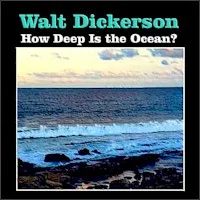Styles: Vibraphone Jazz
Year: 1961
File: MP3@320K/s
Time: 38:14
Size: 89,1 MB
Art: Front
(6:34) 1. Time
(5:09) 2. Elizabeth
(7:03) 3. The Cry
(6:09) 4. Death And Taxes
(6:17) 5. Evelyn
(7:01) 6. Infinite You
This Is Walt Dickerson!
Year: 1961
File: MP3@320K/s
Time: 38:14
Size: 89,1 MB
Art: Front
(6:34) 1. Time
(5:09) 2. Elizabeth
(7:03) 3. The Cry
(6:09) 4. Death And Taxes
(6:17) 5. Evelyn
(7:01) 6. Infinite You
Walt Dickerson never got quite the credit he deserved for pioneering a modernist approach to the vibes during the early '60s, aligning himself with the emerging "new thing" scene and expanding the instrument's vocabulary beyond Milt Jackson's blues and bop influences. Dickerson's groundbreaking sessions for Prestige all predated the rise of Bobby Hutcherson as the hot new "out" vibes player at Blue Note, and while Hutcherson was a bit freer early on, Dickerson's work still sounded adventurous and forward-looking. This Is Walt Dickerson!, his opening salvo, is every bit the statement of purpose the exclamatory title suggests. Each of the six selections is a Dickerson original, and he proves to be a marvelously evocative composer. Witness the cool, film-noir ambience of the mildly dissonant opener, "Time"; the haunting atmospherics of "Elizabeth," a tribute to his wife; the way the repeated riff of "Death and Taxes" imparts the sense of drudgery and inevitability suggested by the title; or the way Dickerson and pianist Austin Crowe keep twisting the rhythmic emphasis and cadences over the repetitive beat of "The Cry." Dickerson's harmonically advanced playing is just as distinctive, too. He keeps the use of vibrato to a bare minimum, so much so that it's almost a shock when he lets some shimmering chords ring out on "Infinite You"; moreover, his use of rubber mallets instead of the customary felt-tipped augments his soft, controlled tone. In addition to Crowe, Dickerson is backed by bassist Bob Lewis and future Cecil Taylor drummer Andrew Cyrille. A striking debut, This Is Walt Dickerson! sets the stage for continued excellence, but also proves that Dickerson's talent was already fully formed.~ Steve Huey https://www.allmusic.com/album/this-is-walt-dickerson%21-mw0000105645
Personnel: Walt Dickerson (vibraphone); Austin Crowe (piano); Andrew Cyrille (drums).
Personnel: Walt Dickerson (vibraphone); Austin Crowe (piano); Andrew Cyrille (drums).
This Is Walt Dickerson!





